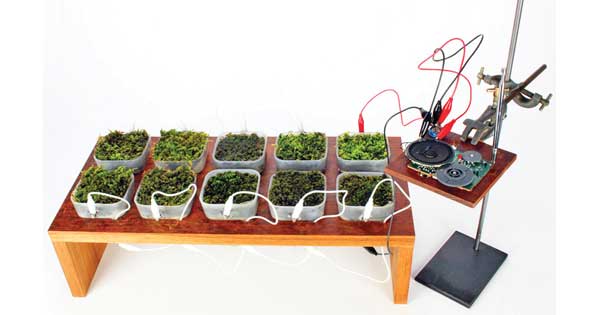
Photomicrobial fuel cells, or photo-MFCs, are nothing new, but last year a two-nation team of researchers stepped up the volume on the green technology.
Swiss industrial designer Fabienne Felder joined with biochemist Paolo Bombelli and plant scientist Ross Dennis, both of the University of Cambridge, to build Moss FM, a radio powered by—yes—the slick green menace of many a shady suburban lawn. Their device employs photo-MFCs that function much like biological solar panels, harnessing the excess electrons that moss produces during photosynthesis and converting them to usable energy.
Moss FM, which can run long enough to play a short song, represents the first time moss has worked for anything more energy-hungry than a small monochrome LCD display. Currently (no pun intended), because the plant doesn’t provide an energy platform stable enough to play Moss FM without interruption, the radio runs on batteries charged from the photo-MFCs. The potential for improvement is huge, though, considering that the radio is harnessing only 0.1 percent of the electrons produced.
In theory, the technology could work with any photosynthesizing plant, but moss is a good choice—it outdoes most plant material in producing excess electrons during photosynthesis. “Because mosses grow slowly, they convert fewer electrons into sugars, which leaves us more to harness,” Felder says.
Rolling stones might gather no moss, but Felder and others would hardly say that moss plays no Rolling Stones.

